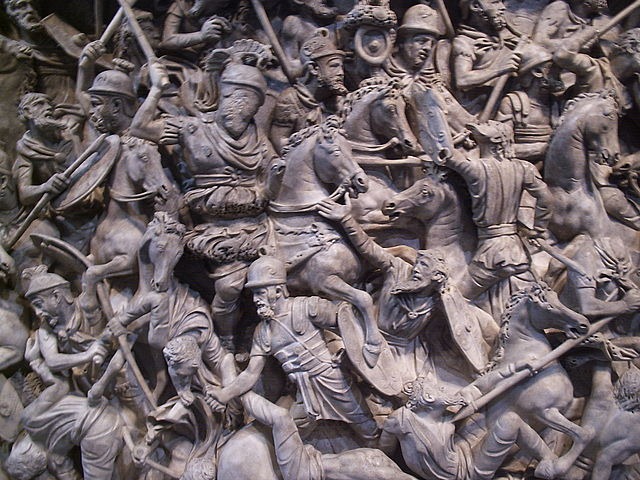От известно време в псевдонаучните сайтове се набива на очи неаргументираното 'критикуване' на радиометричните методи на анализ на скали и фосили, които според привържениците на 'интелигентния дизайн' не са точни и не дават представа за геологичната възраст на земята. 'Доказателствата' на тези 'нови учени' се свеждат предимно до лаишки и семпли нападки срещу радиовъглеродното датиране, при все че съществува богата и разнообразна методика за идентификация на възрастта на скалните породи и съдържащите се в тях вкаменелости. Но за незапознатия с материята човек 'логиката' на креационистите на пръв поглед е убедителна.
Но как стоят нещата в действителност.
Датиране по уран-олово
Датирането по уран-олово е един от най-старите начини на датиране, както и един от най-добрите. Той е усъвършенстван до такава степен, че грешката при датиране на скали на възраст около два милиарда и половина години е не повече от два милиона години.
Датирането по уран-олово често се извършва на минерала "циркон" (ZrSiO4), но може да се прилага и на други вещества. Цирконът включва в кристалната си решетка ураниеви атоми като заместители на циркониевите, а атомите на оловото биват изхвърляни. Минералът циркон има много висока блокираща температура, устойчив е на механична ерозия и е химически силно инертен. Цирконът образува многобройни пластове по време на метаморфозни преобразувания, като всеки пласт представлява запис на изотопната възраст на метаморфозата.
Едно от огромните предимства на този минерал е, че пробата съдържа два часовника - единият се основава на разпада на уран-235 в олово-207, с период на полуразпад 700 милиона години, а другият се основава на разпада на уран-238 в олово-206, с период на полуразпад около 4.5 милиарда години. По този начин в една проба е заложена възможността за кръстосана проверка, което позволява точно определяне на възрастта на пробата дори и ако част от оловото я е напуснало.
Ето и абстракт, показващ как става това:
http://www.sciencedirect.com/science?_ob=ArticleURL&_udi=B6V5Y-42Y14T1-3&_user=10&_coverDate=06%2F01%2F2001&_rdoc=1&_fmt=high&_orig=search&_origin=search&_sort=d&_docanchor=&view=c&_acct=C000050221&_version=1&_urlVersion=0&_userid=10&md5=a7902d0be99949410b4da5490747d75f&searchtype=a
Thus, the LAM-ICP-MS technique is capable not only of achieving precise 207Pb/206Pb ages at about the 1% level for >1000 Ma zircons, but also of dating 206Pb/238U ages with precision of 2–5% for Mesozoic (156–126 Ma) zircons. It is likely that this simple and relatively low cost technique is able to achieve age results even comparable to the SHRIMP-type ion probe in the measurement of the relatively large (>100 micrometers) and homogeneous zircons.
Датиране по рубидий-стронций
Датирането по рубидий-стронций се основава на бета-разпада на рубидий-87 на стронций-87, с период на полуразпад 50 милиона години. По този начин се датират стари магмени и метаморфни скали, както и проби от Луната. Блокиращите температури са толкова високи, че не създават проблеми за датирането. Датирането по рубидий-стронций не е толкова точно, колкото това по уран-олово. Грешките при него са от порядъка на 30-50 милиона години за проба на възраст 3 милиарда години.
http://en.wikipedia.org/wiki/Rubidium-strontium_dating
Но не бива да се мисли, че учените не вземат предвид неточностите, които могат да се получат. Както си пише: Thus, assigning age significance to a result requires studying the metasomatic and thermal history of the rock, any metamorphic events, and any evidence of fluid movement. A Rb-Sr date which is at variance with other geochronometers may not be useless, it may be providing data on an event which is not representing the age of formation of the rock.
Датирането по калий-аргон включва улавяне на електрони или на позитрони при разпада на калий-40 на аргон-40. Калий-40 има период на полуразпад 1.3 милиарда години, поради което методът е подходящ за датиране на най-старите скали. Радиоактивният калий-40 се среща в слюдата, фелдшпатите и хорнбленда, въпреки, че блокиращата температура в тях е доста ниска - от около 125°C (слюда) до 450°C (хорнбленда).
А ето едно кратко филмче, което показва на какво се основава калий-аргоновото датиране, който е един от най-точните методи:
И малко инфо от уикито:
http://en.wikipedia.org/wiki/Potassium-argon_dating
Ето още няколко анализа, които се ползват в практиката и дават голяма точност при определянето на възрастта на скалите:
Самарий/Неодимий:
http://en.wikipedia.org/wiki/Samarium-neodymium_datingОтклонението е около 20 милиона години при проба на възраст 2,5 милиарда години.
Ураново/ториево датиране:
http://en.wikipedia.org/wiki/Uranium-thorium_dating
Там отклонението е няколко стотици хиляди години.
А това е едно интересно изследване, което показва, как съчетанието на три методики: Sm–Nd, U–Pb, и Pb–Pb довеждат до корекция в датировката, направена само по метода Rb–Sr. Оказва се, че скалите са със 100 милиона години по-стари, отколкото предходния анализ показва.
http://www.sciencedirect.com/science?_ob=ArticleURL&_udi=B6V61-3VF9F9F-Y&_user=10&_coverDate=12%2F15%2F1998&_rdoc=1&_fmt=high&_orig=search&_origin=search&_sort=d&_docanchor=&view=c&_acct=C000050221&_version=1&_urlVersion=0&_userid=10&md5=a900efd7fb2eda88ba029eee76fa8c9b&searchtype=a
И още маса методи за датиране, които се прилагат в зависимост от образеца, който имаме /подходът не е унифициран/:
(Ar-Ar)
(I-Xe)
(La-Ba)
(Pb-Pb)
(Lu-Hf)
(Ne-Ne)
(Re-Os)
(U-Pb-He)
(U-U)
Също така имаме:
Датиране по метода на следите на делене (fission-track method)
Това е добре доказан и широко използван метод за радиоактивно датиране на геоложки и археоложки събития и артефакти. За тази цел се използват минерали, съдържащи уран и срещащи се в природата — най-често това са циркон и апатит, както и вулканично стъкло. Методът се базира на спонтанния радиоактивен разпад на ядрото на изотопа на урана 238U. За разлика от другите методи на радиоактивно датиране тук не се измерва концентрацията на изотопа, а оставените следи от високоенергетични частици, излъчени при разпада. Те формират линейни дефекти в кристалната решетка на околните материали, наречени следи от спонтанното делене (spontaneous fission tracks). Акумулираните с времето следи могат да се наблюдават с обикновен петрографски микроскоп след полиране и ецване на кристалната повърхност. Тъй като броят на следите на делене зависи от температурата, методът се използва за проследяване на температурната еволюция на скали и минерали от горната част на кората (2 - 8 км).
http://www.mnsu.edu/emuseum/archaeology/dating/dat_fission.html
Датиране с оптично симулиране на луминисценция
Той определя колко дълго минералите са били изложени на дневна светлина.
http://www.mnsu.edu/emuseum/archaeology/dating/osl.html
Meтодиката се прилага за анализ на образци на възраст от няколко стотици години до 100 000 години.
А ако сте се заинтересували от методите за датиране, на този сайт можете да видите всички методи за датиране, както и отговорите на експертите на лаишките нападки, опитващи се да изкарат радиометричния анализ неточен:
http://www.asa3.org/ASA/resources/Wiens.html
Същото датиране имаме и при археологията, която използва oсновно радиовъглеродният анализ /приложим с най-голяма точност при останки на възраст до 70 000 години - т. е. докогато имаме органични остатъци/, а още и данни от дендрохронологията. И се получават точни резултати за близки епохи.
Дендрохронологията се основава върху изследвания на годишните пръстени на дървесината. Прилага се за датиране на древни предмети и фрагменти от дърво /например, в постройки/, а също в биологията при изучаване биологическите промени през последните хилядолетия. Съществува направление в дендрохронологията — дендроклиматология, занимаващо се с изучаване на закономерностите при изграждането на годишните пръстени при различни видове дървета за установяване на климатичните промени в минали геологически епохи.
Или ето за какво става дума:
Wood of course is organic and will generally biodegrade when the tree cells stop growing. Animals feasting on it, air, bacteria or water will also speed up this process. Fortunately there are certain climates, like the Southwest, which slow the biodegradation process. Dry weather, water logging or fossilization preserve the wood for hundreds or thousands of years, making dendrochronology possible. In the Southwest U.S. archaeologists have found many cliff dwellings and were able to date entire villages and learn about their technology by using this method. Advances in the known chronologies are helpful for dendrochronologists. In the American Southwest bristlecone pine chronologies now extend 8,500 years. Work done in Germany and Northern Ireland has expanded the European oak and pine chronologies to over 11,000 years. Work in the Aegean over the past twenty years has produced about 6,000 years of chronologies over the past 9,500 years
http://www.mnsu.edu/emuseum/archaeology/dating/dat_dendro.html
Както виждате методологията е доста разнообразна и специфична и не върви човек, който не я е изучавал, да прави прибързани обобщения, продиктувани от незнание или заблуда /това, което правят повечето креационисти/.



